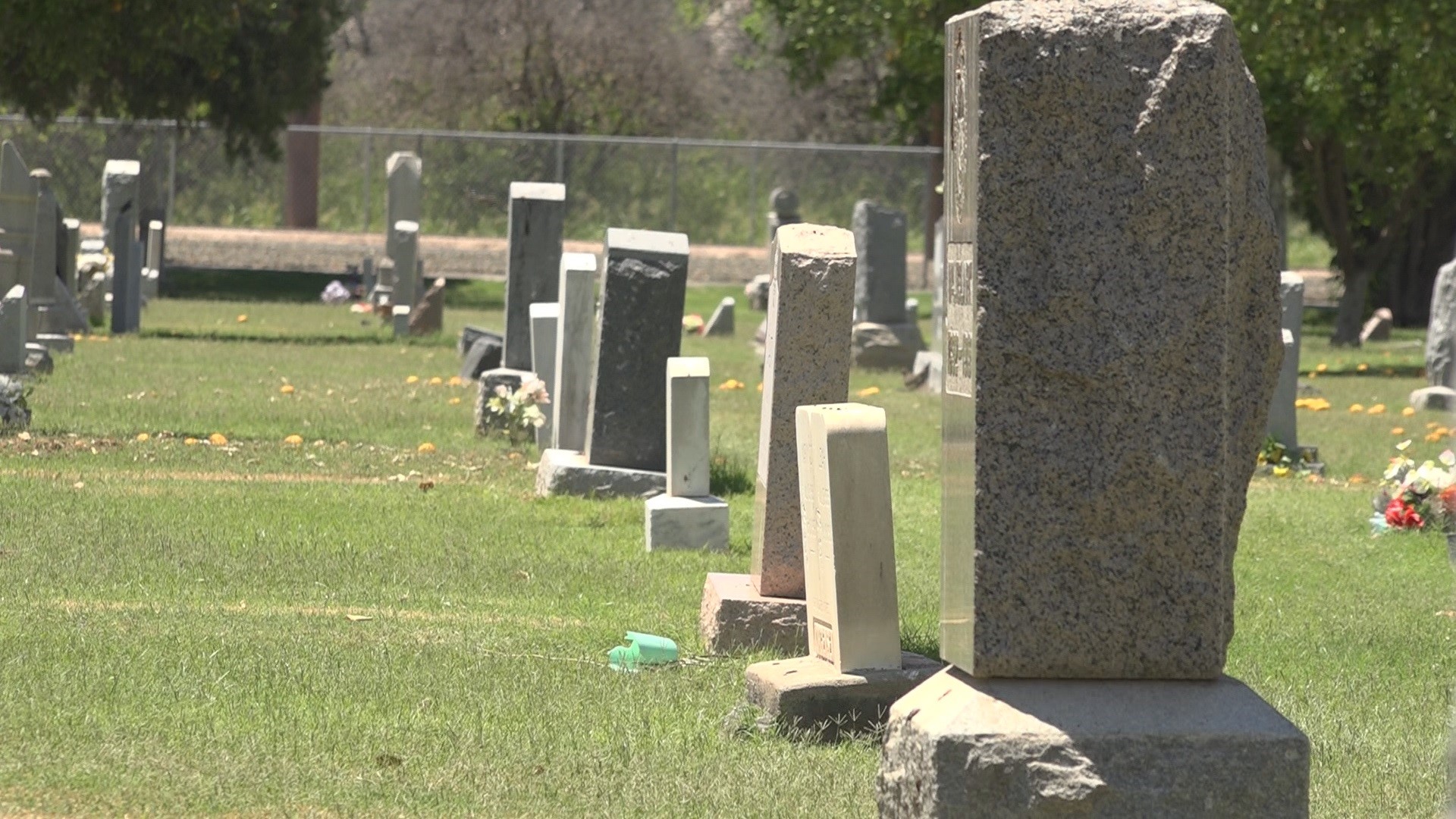MESA, Ariz. — Over sections of green grass, surrounded by fencing, Vic Linoff searches for the next plot.
"It's a thrill," Linoff, a historian, said.
He's walking through Mesa's Cemetery, full of history, not just for the city, but the country too.
"Every one of these people had lives and some were ordinary, some were extraordinary," Linoff said.
Linoff sees the cemetery differently than some might, maybe because of those who stay here.
"There are over 38,000 permanent residents," Linoff said with a smile. "Not winter visitors, permanent residents."
Linoff said that's nearly the population of Sun City.
The cemetery is technically full, Linoff said, but it's been expanded and more land has been recently acquired by the City of Mesa to keep expanding.
One of those 38,000 includes Waylon Jennings, the legendary musician who pioneered the outlaw movement in country music.
"Usually you can spot it because it's probably the most visited grave in the cemetery," Linoff said.
Jennings' black stone grave marker, with a picture of his smiling face, stands out from the others in its row. It's larger, and one of the more decorated ones in the row.
On this particular day, the marker has flowers and a can of beer, along with coins left by people who've stopped by.
It's not the only grave of someone well-known in the city's cemetery.
"In the confines of this cemetery is one of the most infamous people in US history," Linoff said.
Linoff is referring to the grave of Ernesto Miranda, of Miranda Rights.
Even though in June, the Supreme Court ruled police officers can't be sued if they don't properly tell people under arrest of those rights.
"That resulted in a major change in which the way arrests were made," Linoff said, referring to the original Supreme Court case.
In between their graves, lie many who most passing by may not know.
"Every one of these headstones tells some story," Linoff said.
But their graves and stories are still equally important. Among them, include Dr. Lucious Alston, an African American doctor who lived in the Washington-Escobedo neighborhood.
"He was practicing medicine when there was significant segregation in the city," Linoff said.
Others, hold special plaques, marking those who spent 177 days aboard the Brooklyn Pioneer and survived. The ship made the trek from the east coast to the west coast.
"They got blown off course, almost to Africa, had to go all the way around South America," Linoff said.
Their graves lie in the older portion of the cemetery. It's easier to spot with actual headstones versus grave markers.
Some of the graves in the cemetery weren't even originally buried at the current location off of Center Street and Brown Road.
The first location of Mesa's cemetery was built just south of there at Center Street and University Drive in 1183. But Linoff said the smallpox outbreak gave evidence that the city would need more room to bury people.
Linoff said Native Americans were hired to dig up those graves at the original site and move them to the current cemetery in 1891.
Still, others have graves that go unmarked. Like Alexander McPherson's grave.
"He was the first African-American that we know of to take residency within the city limits," Linoff said.
The limits of the cemetery hold children, mothers, fathers and good Mesa High School football players.
"There's so many sad stories in the cemetery, this is one of the saddest," Linoff said, standing in front of a dark-colored headstone.
Zedo Ishikawa was just 17 years old when he died. Linoff said he accidentally shot himself while trying to separate a pair of fighting dogs.
As he was dying, he left a final message for his teammates.
"Tell the boys to 'carry on', and 'carry on' has been a rallying cry of Mesa High ever since," Linoff said.
It's those who've passed, impacting those now present in Mesa.
"It's representative of the population we have today," Linoff said.
Linoff is also part of the group that helps give tours of the Mesa Cemetery each October, highlighting even more of the graves that lie there.
For 2022, the Mesa Historical Museum will hold its cemetery tours on October 22 from 8 a.m. to 10 a.m. More information can be found here.
Up to Speed
Catch up on the latest news and stories on the 12 News YouTube channel. Subscribe today.

